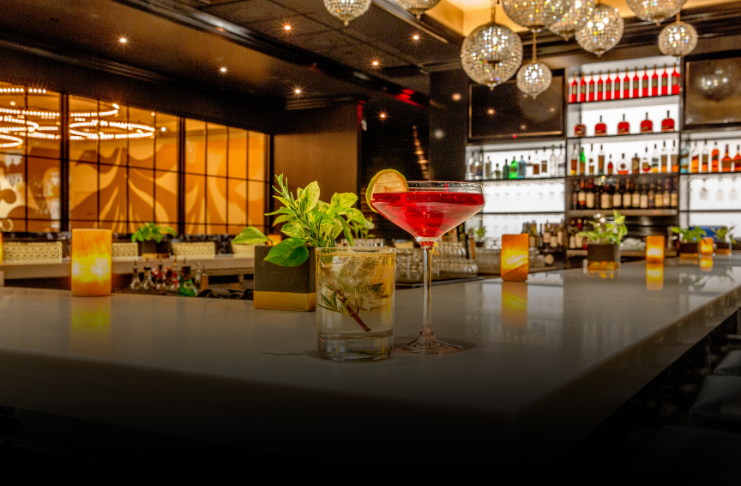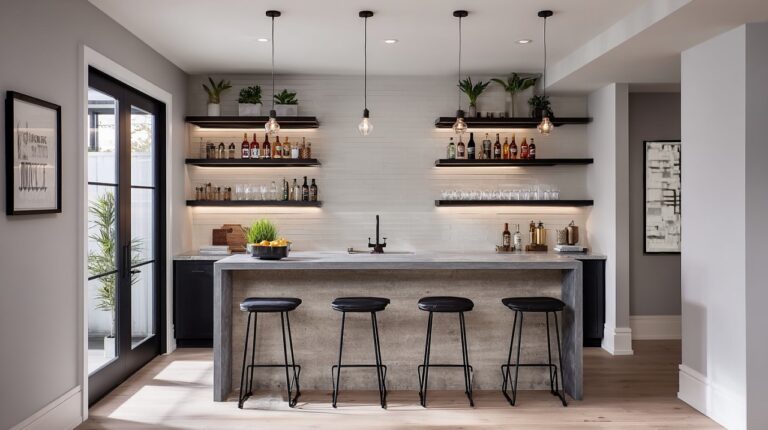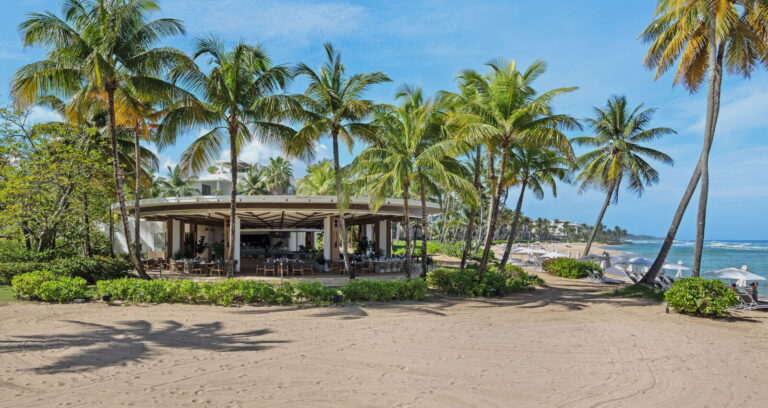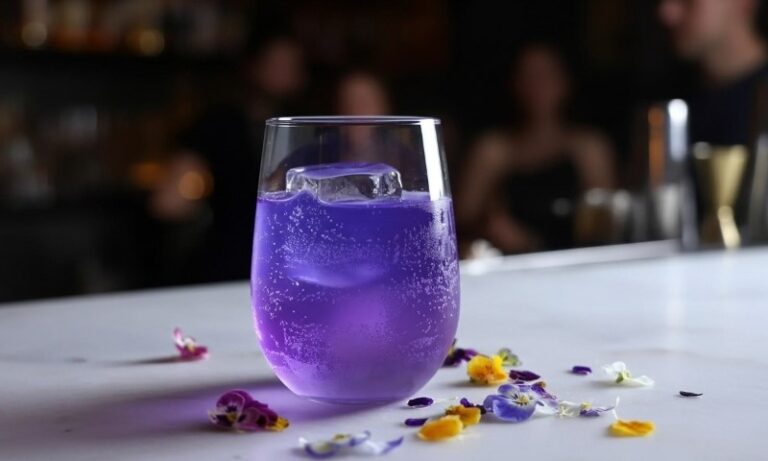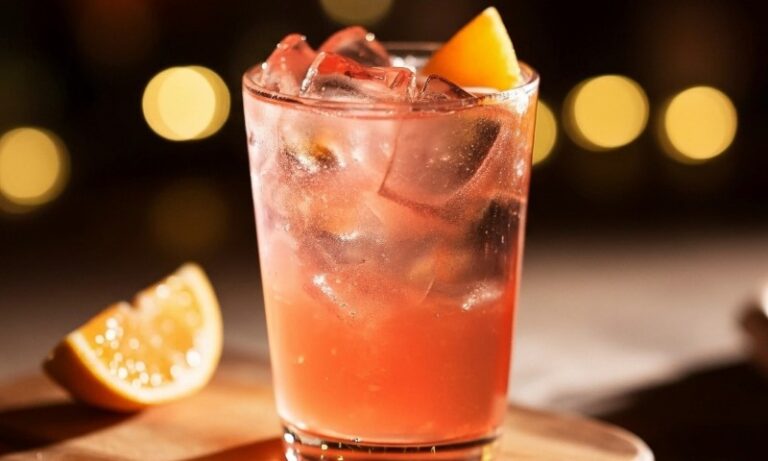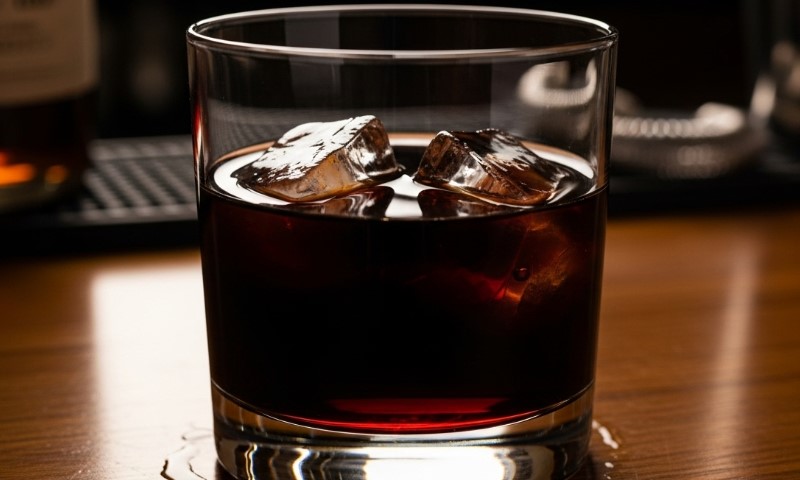If you hang around cocktail bars long enough, sooner or later you’ll spot a squat, dark bottle behind the counter labeled “blackstrap rum.” It looks mysterious, maybe even intimidating, and bartenders often reach for it like a secret weapon rather than a staple.
It’s not the sweet, tropical rum that slips quietly into daiquiris or piña coladas. It’s the rougher cousin with a sea-worn edge, carrying the weight of history and the molasses of the sugar mill in every sip.
Let’s break down what makes blackstrap rum what it is, why it’s loved by bartenders who know their spirits, and how you can actually use it without ending up with a drink that tastes like engine oil.
Table of Contents
ToggleWhat Is Blackstrap Rum?
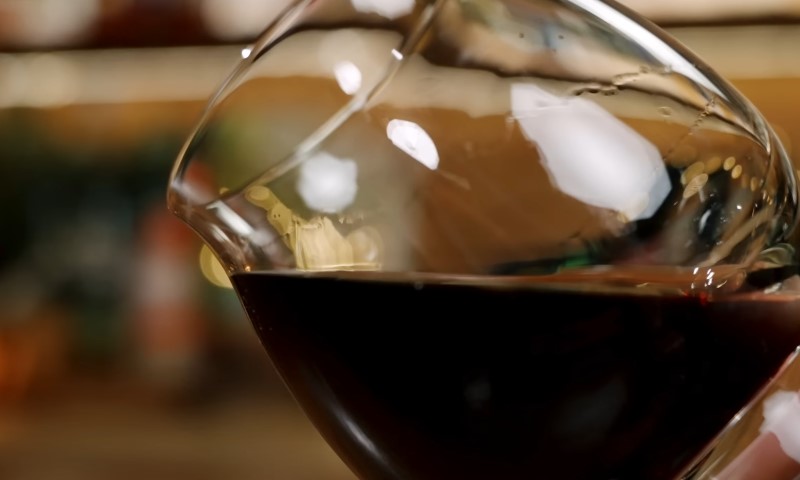
Blackstrap rum is made from blackstrap molasses , the thick, almost bitter byproduct that’s left after sugarcane syrup has been boiled multiple times to extract sugar crystals.
It’s the darkest, most mineral-heavy form of molasses, rich in iron, magnesium, and a flavor profile that’s equal parts earthy, smoky, and slightly burnt.
When distillers use that molasses as the base, you get rum that’s thick, heavy, and deeply flavored. It’s often dark in color, nearly black, with strong notes of coffee, licorice, caramelized sugar, and smoke .
To put it simply: blackstrap rum isn’t about smoothness. It’s about power.
A Quick Look
| Type of Rum | Base Ingredient | Flavor Profile | Common Uses |
| Light Rum | Refined sugar/molasses | Clean, mild, slightly sweet | Daiquiri, Mojito |
| Gold Rum | Light molasses | Balanced caramel and spice | Rum Punch, Cuba Libre |
| Dark Rum | Heavier molasses | Rich, toffee-like | Mai Tai, Dark ‘n’ Stormy |
| Blackstrap Rum | Blackstrap molasses | Bitter-sweet, smoky, earthy | Coffee cocktails, tiki drinks, bold syrups |
What It Tastes Like (and Why It’s Not for Everyone)
The first sip of blackstrap rum can catch people off guard. It’s bittersweet , with a deep note of charred sugar and a hint of salinity. You might notice flavors like:
- Burnt caramel
- Black coffee
- Molasses
- Licorice or anise
- Tobacco
- Salted toffee
Some drinkers describe it as tasting like “molasses syrup with smoke.” Others say it reminds them of barbecue sauce or dark espresso. Both are fair.
Blackstrap rum doesn’t try to be easy. That’s part of the charm. When used right, it brings a depth that light or spiced rums can’t touch. When used wrong, it can overwhelm a drink faster than you can stir.
How It’s Made
Blackstrap rum starts the same way as other molasses-based rums: fermenting molasses with water and yeast. But the key difference lies in how the molasses is treated and how the distillate is aged .
- Fermentation: Blackstrap molasses ferments slower than lighter grades because it’s high in minerals and low in sugar. The yeast strains must be hardy, often local to the distillery.
- Distillation: Many producers use pot stills for more character, while others use column stills for consistency. The final product tends to be heavier.
- Aging: Some blackstrap rums are aged in charred oak barrels for extra smokiness. Others are blended with caramel or molasses syrup after distillation to deepen the color and taste.
There’s no global rulebook for blackstrap rum, which means the style can vary widely from brand to brand.
Famous Brands and Bottles to Know
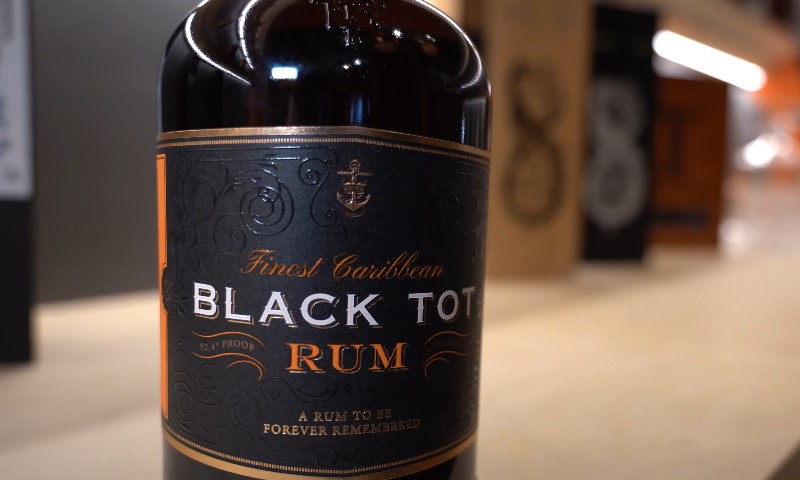
If you want to get a sense of what blackstrap rum can do, start with the bottles that bartenders actually reach for:
| Brand | Origin | Notable Traits | Suggested Use |
| Cruzan Black Strap Rum | U.S. Virgin Islands | Salty, thick, strong molasses note | Coffee cocktails, tiki recipes |
| Blackwell Rum | Jamaica | Balanced, not overly bitter | Neat or on the rocks |
| Gosling’s Black Seal | Bermuda | Slightly sweeter, used in Dark ‘n’ Stormy | Ginger beer cocktails |
| Plantation Original Dark | Blend (Trinidad & Jamaica) | Layered spice and wood notes | Punches and winter drinks |
| Hamilton Black Rum | Guyana | True blackstrap flavor, smoky and robust | Serious tiki and classic rum drinks |
A small pour of Hamilton or Cruzan will show you why bartenders describe it as “liquid molasses with a temper.”
How Bartenders Actually Use It
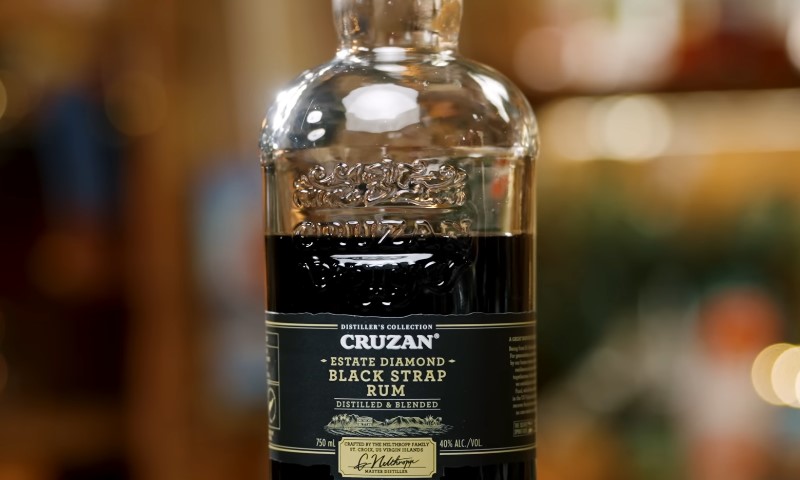
Bartenders rarely use blackstrap rum as the main spirit. It’s too heavy, too dominant. Instead, it’s used the way chefs use balsamic glaze, a touch to add depth, contrast, and richness .
Here are some ways pros use it:
- As a float : A spoonful layered on top of a drink like a Mai Tai or Planter’s Punch gives aroma and visual drama.
- In tiki syrups : Mixed into orgeat or demerara syrup for more backbone.
- In coffee or dessert cocktails : Adds that dark, roasted tone to espresso martinis or milk punches.
- In culinary crossovers : Some chefs use it in sauces for pork, ribs, or even desserts like sticky toffee pudding.
It’s not just a drink ingredient; it’s a flavor amplifier.
The Blackstrap Old Fashioned
If you want to test-drive blackstrap rum at home, the easiest place to start is with a rum-based Old Fashioned .
Ingredients
- 2 oz blackstrap rum (or mix half with a lighter dark rum)
- ¼ oz simple syrup
- 2 dashes Angostura bitters
- Orange peel
Directions
- Stir all ingredients over ice.
- Strain into a rocks glass with a large cube.
- Express the orange peel over the glass and drop it in.
The orange oil lifts the dense molasses base and turns the drink into something complex without being too sweet.
The Kingston Negroni (Blackstrap Edition)
Another modern classic twist that shows how well blackstrap plays with bitterness.
Ingredients
- 1 oz blackstrap rum
- 1 oz Campari
- 1 oz sweet vermouth
Stir and strain over a big cube. Garnish with orange peel. The molasses depth of the rum pairs with Campari’s herbal bite, creating a moody, slow-sipping cocktail.
The Tiki Connection
Blackstrap rum holds a special place in tiki culture , where it’s used to add stormy undertones to tropical drinks.
When tiki first took off in mid-20th century America, bartenders were already experimenting with layered rum blends.
It adds dimension, turning a bright drink into something richer and more mysterious. Think of drinks like:
- The Corn ‘n’ Oil – A mix of blackstrap rum, falernum, and lime, hailing from Barbados. It looks like crude oil, tastes like heaven.
- Blackstrap Mai Tai – A bold twist where blackstrap replaces or floats over the top of aged rum.
- Jungle Bird (variation) – A tiki-style bitter drink using Campari, pineapple, and a touch of blackstrap for depth.
The Science of Its Color and Body
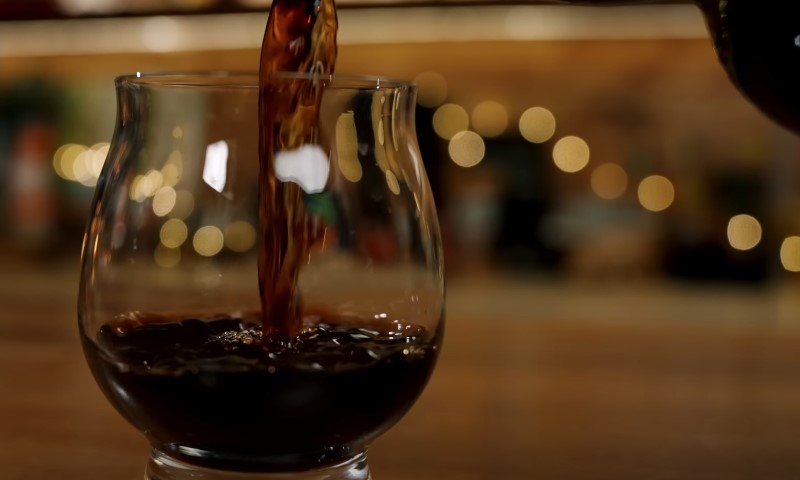
The deep color of blackstrap rum doesn’t always come from aging alone. It’s often reinforced by added molasses or caramel coloring.
That’s part of the identity. True blackstrap molasses brings pigments that bind with ethanol molecules, creating that glossy, opaque look and syrupy mouthfeel.
Some distillers skip added sweeteners, relying only on the base molasses. Others adjust it slightly to balance bitterness. Both methods have their place, depending on whether the goal is a mixer or a sipping rum.
Blackstrap Rum in Food and Cooking
Outside the bar, blackstrap rum can play a serious supporting role in the kitchen. Its robust sweetness and smoky edge work beautifully in recipes that already have brown sugar, spice, or caramel elements.
Ideas for using blackstrap rum in food:
- Add a tablespoon to BBQ sauces for ribs or pulled pork.
- Mix it into banana bread or ginger cookies for a richer aroma.
- Stir a splash into caramel sauce for ice cream or flan.
- Combine with butter and brown sugar for rum-glazed plantains.
You can even flambé with it, though you’ll need a little patience—it’s not as high-proof as other spirits.
Price Range and Buying Tips
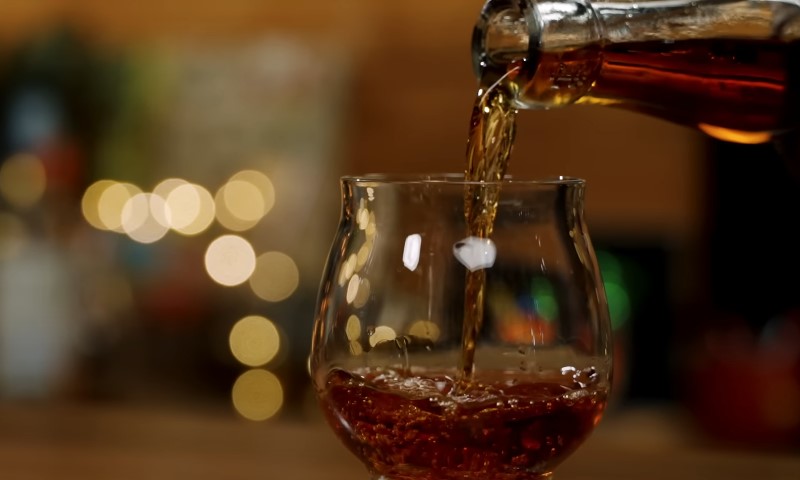
Blackstrap rums are generally affordable. Most bottles sit between $20 and $40 USD , depending on brand and import. Because they’re strong in flavor, a bottle lasts a long time.
If you’re shopping, keep an eye on:
- Proof (ABV): Look for 40–47%. Anything lower might taste flat in cocktails.
- Origin: Guyana, Jamaica, and Barbados have the most traditional styles.
- Additives: Some brands sweeten post-distillation. If you prefer natural profiles, check labels or producer notes.
How to Mix It Without Overdoing It
Blackstrap rum’s biggest risk is balance. It can dominate a cocktail quickly. Here are a few easy ratios to keep it in check:
| Use Case | Ratio | Tip |
| Float | ¼ oz | Pour slowly over the back of a spoon for a visual layer |
| Flavor accent | ½ oz to ¾ oz | Blend with lighter rums |
| Main spirit | 1½ oz | Pair with citrus or spice to offset bitterness |
If you’re experimenting, start small. Think of it as seasoning, not sauce.
Myths About Blackstrap Rum
There are a few common misunderstandings that tend to follow blackstrap rum around:
“It’s the same as dark rum.”
Not exactly. All blackstrap rums are dark, but not all dark rums use blackstrap molasses. Dark rum can be caramel-colored and smooth. Blackstrap rum has a distinct, burnt-molasses character.
“It’s low-quality rum.”
Historically, yes, it was cheaper. But modern producers have embraced blackstrap as a niche craft category. Brands like Hamilton and Blackwell use high-quality distillation methods to preserve flavor, not mask it.
“You can’t sip it neat.”
You can, but it’s intense. Try it chilled or with a few drops of water to release aroma. It’s more akin to an after-dinner spirit than a casual sipper.
Why Bartenders Keep Coming Back to It
Ask a seasoned bartender why they keep a bottle of blackstrap on hand, and the answer usually sounds something like: “Because nothing else tastes like it.”
It’s a rum that forces restraint. It teaches you to measure, to balance, to think in layers. You can’t fake it. When you use it right, it rewards you with a drink that feels grounded and textured. When you overdo it, it reminds you who’s in charge.
That kind of spirit keeps bartenders honest.
Final Thoughts
Blackstrap rum might not be everyone’s go-to pour, but it’s one of the most distinctive bottles you can keep in your home bar. It connects centuries of sugarcane history, maritime trade, and island craft into a single, rich, sticky sip. It challenges your palate and rewards creativity.
So next time you’re restocking your bar, grab a bottle. Experiment a little. Float it on top of your next Mai Tai or mix it with espresso and orange bitters. You might find that “pirate juice” has more to teach your palate than you expected.
Related Posts:
- Weird Ingredients You Didn’t Know You Could Put in Cocktails
- What Exactly Is Rum Made From? A Breakdown of Ingredients
- 750ml Equals How Many Ounces? Conversion Explained
- How to Make a Perfect Negroni - The Tools and…
- Traditional Caipirinha Cocktail Recipe You Can Make…
- Clarified Milk Punch Recipe - Because You’re Too…


